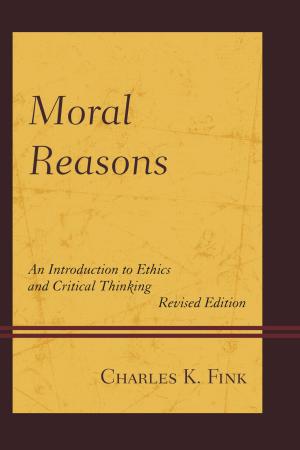Postwar Higher Education in America
Just Yesterday
Nonfiction, Reference & Language, Education & Teaching, Higher Education, Administration| Author: | Richard B. Schwartz | ISBN: | 9780761870555 |
| Publisher: | Hamilton Books | Publication: | September 15, 2018 |
| Imprint: | Hamilton Books | Language: | English |
| Author: | Richard B. Schwartz |
| ISBN: | 9780761870555 |
| Publisher: | Hamilton Books |
| Publication: | September 15, 2018 |
| Imprint: | Hamilton Books |
| Language: | English |
The twenty million students now pursuing higher education in America are paying more than history, culture and the consumer price index can possibly justify, while the product they are purchasing is one that has become systematically debased. General education has been depreciated, core curricula eroded, expectations (at all levels) reduced. Slightly above half of the currently-enrolled students are graduating and only half of those are finding employment commensurate with what was once understood to be an authentic college education. Many are saddled with crippling debt, a particularly cruel reality for those who are unemployed or underemployed and unable to remove their debts via bankruptcy.
Commentators now refer to the college campus as a country club or a daycare facility, one that is populated by a host of counselors, tutors and hand-holders who serve an often unprepared or underprepared student body. Remedial courses are commonplace, even with the systematic reduction of expectations. Among competing nations, international tests place our 15 year-olds no higher than 19th in three critical categories. Many now speak of "K-16 education" as our colleges replicate the atmosphere and behaviors of our grammar and high schools.
How did we reach this point? How did the erosion of faculty and curricular authority occur within our institutions of higher learning? What roles were played by the radical students of the 1960s? How did our colleges of education contribute to the problem? How did corporatist administrators replace academic leaders and leverage ideologies to extend bureaucracy, attract and secure tuition dollars at any intellectual cost and create self-serving career paths for individuals running across the cracking ice of ineptitude and a lack of personal commitment?
Most important, how can we reverse this process, recapture the relevant strengths of past practices, escape the gray vocationalism we now encounter at every turn and return to principles and standards that can legitimately be termed authentic? How can we save the previously-marginalized students who suffer the most within the current system? These are the questions posed by this book.
The twenty million students now pursuing higher education in America are paying more than history, culture and the consumer price index can possibly justify, while the product they are purchasing is one that has become systematically debased. General education has been depreciated, core curricula eroded, expectations (at all levels) reduced. Slightly above half of the currently-enrolled students are graduating and only half of those are finding employment commensurate with what was once understood to be an authentic college education. Many are saddled with crippling debt, a particularly cruel reality for those who are unemployed or underemployed and unable to remove their debts via bankruptcy.
Commentators now refer to the college campus as a country club or a daycare facility, one that is populated by a host of counselors, tutors and hand-holders who serve an often unprepared or underprepared student body. Remedial courses are commonplace, even with the systematic reduction of expectations. Among competing nations, international tests place our 15 year-olds no higher than 19th in three critical categories. Many now speak of "K-16 education" as our colleges replicate the atmosphere and behaviors of our grammar and high schools.
How did we reach this point? How did the erosion of faculty and curricular authority occur within our institutions of higher learning? What roles were played by the radical students of the 1960s? How did our colleges of education contribute to the problem? How did corporatist administrators replace academic leaders and leverage ideologies to extend bureaucracy, attract and secure tuition dollars at any intellectual cost and create self-serving career paths for individuals running across the cracking ice of ineptitude and a lack of personal commitment?
Most important, how can we reverse this process, recapture the relevant strengths of past practices, escape the gray vocationalism we now encounter at every turn and return to principles and standards that can legitimately be termed authentic? How can we save the previously-marginalized students who suffer the most within the current system? These are the questions posed by this book.















